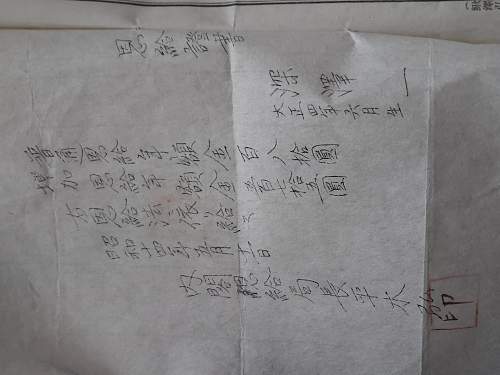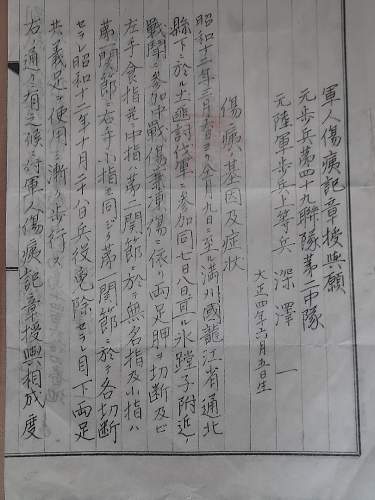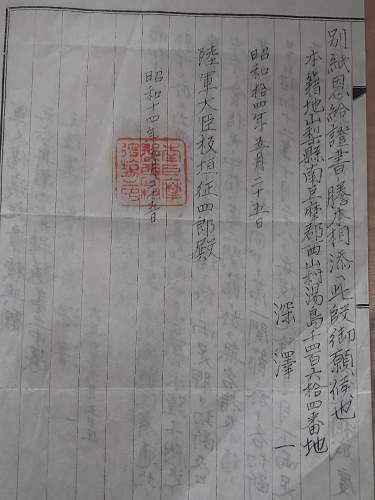I bought this document that I found interesting, although I don't know exactly what kind of document it is.
It looks like an award of the wounded medal and pension.
It seems that this soldier fought in some battle in China in early 1937 in 氷膛子 (not sure)(although the second Sino-Japanese war had not started yet) and suffered frostbite on his feet and fingers and had to be amputated.
Could anyone provide some information about the document. I would be very grateful.
Thanks in advance.







 .
.

Bookmarks